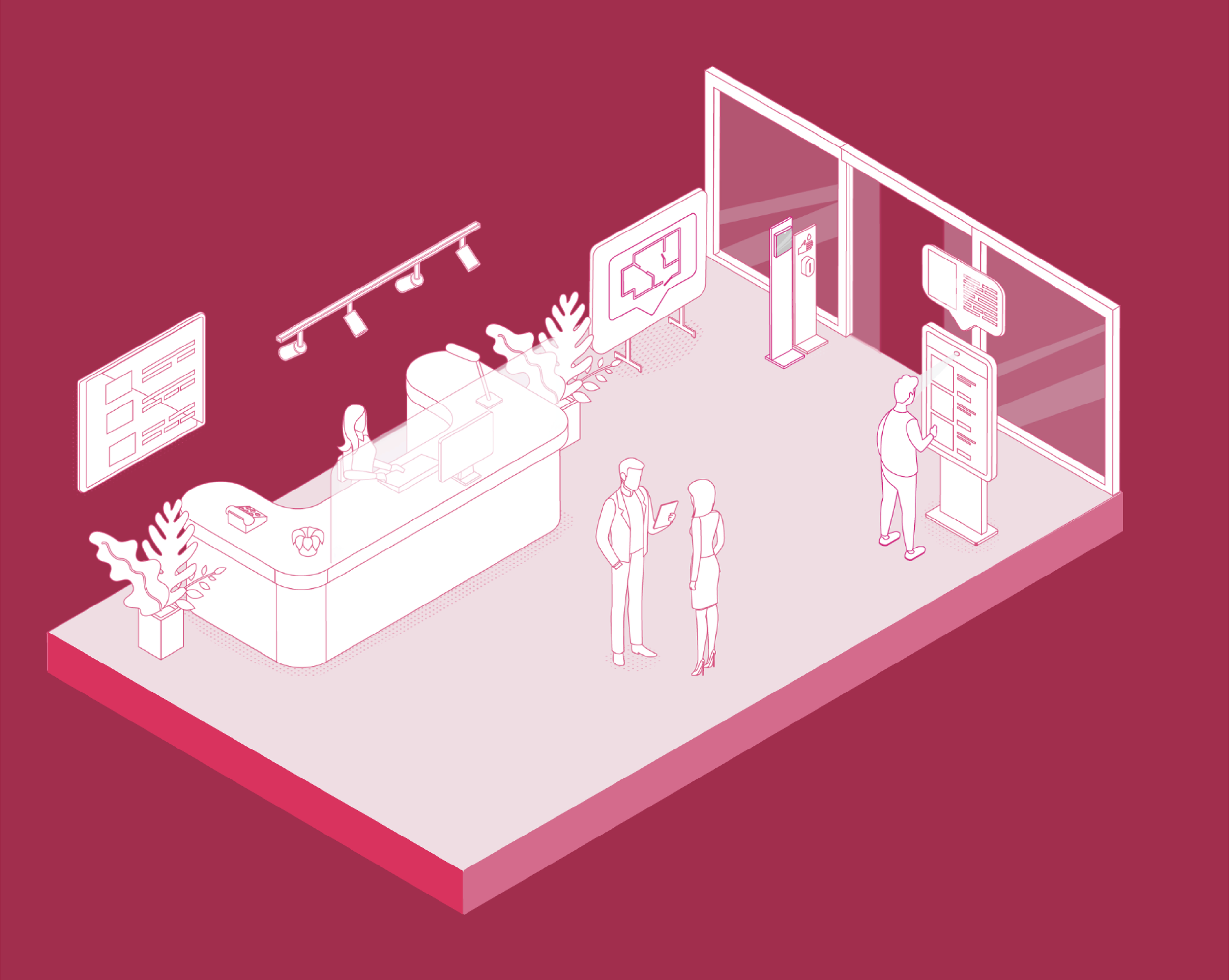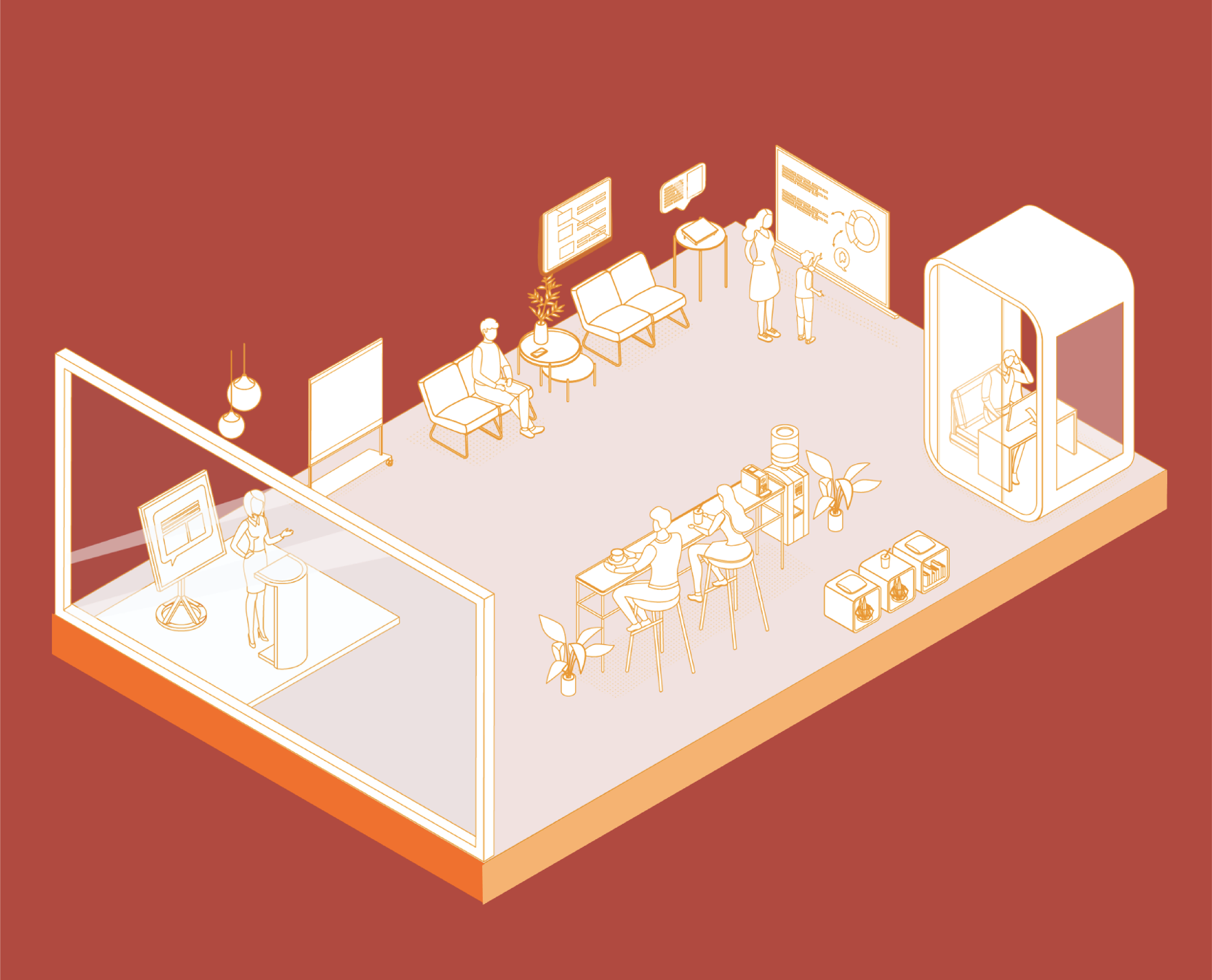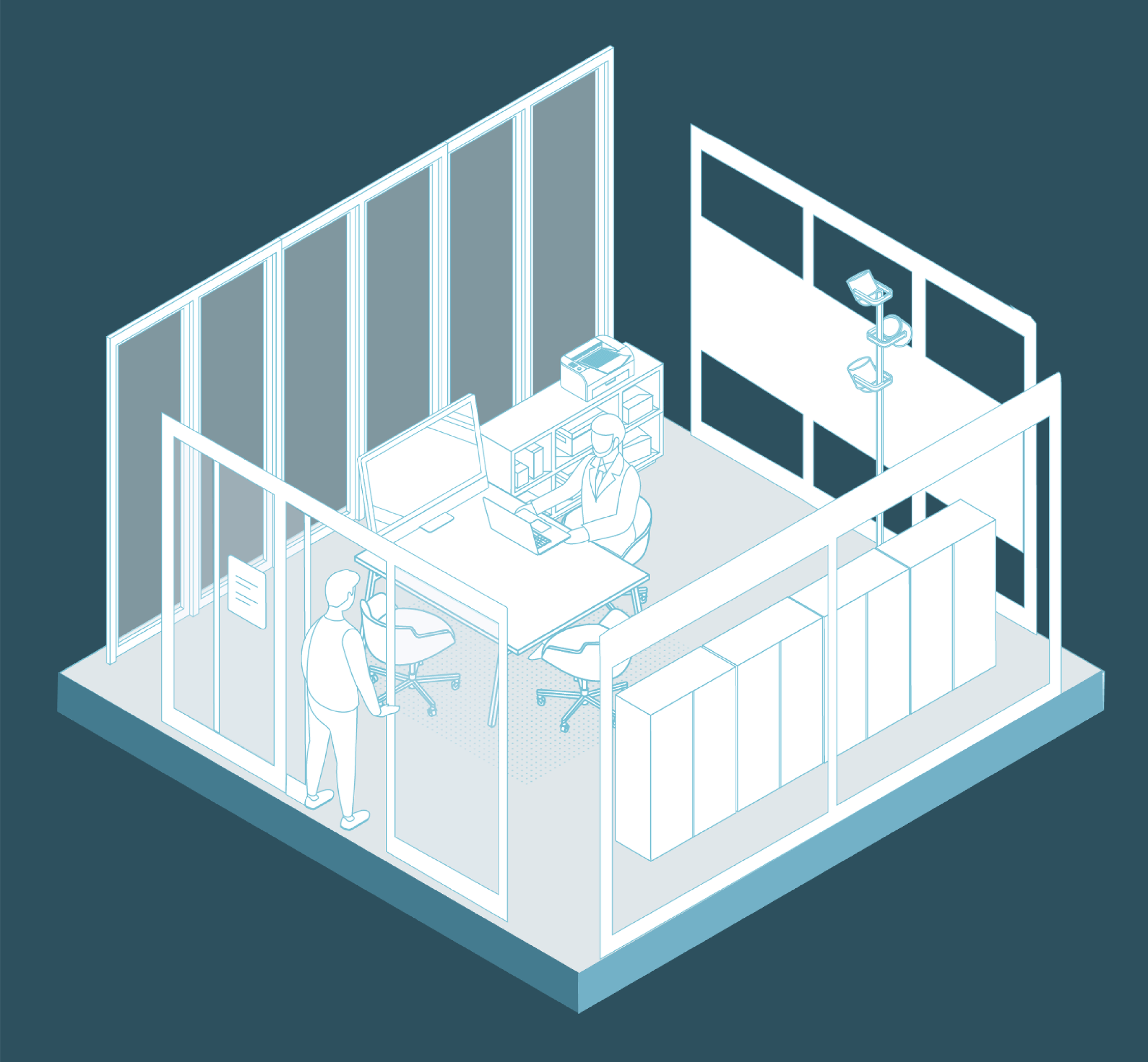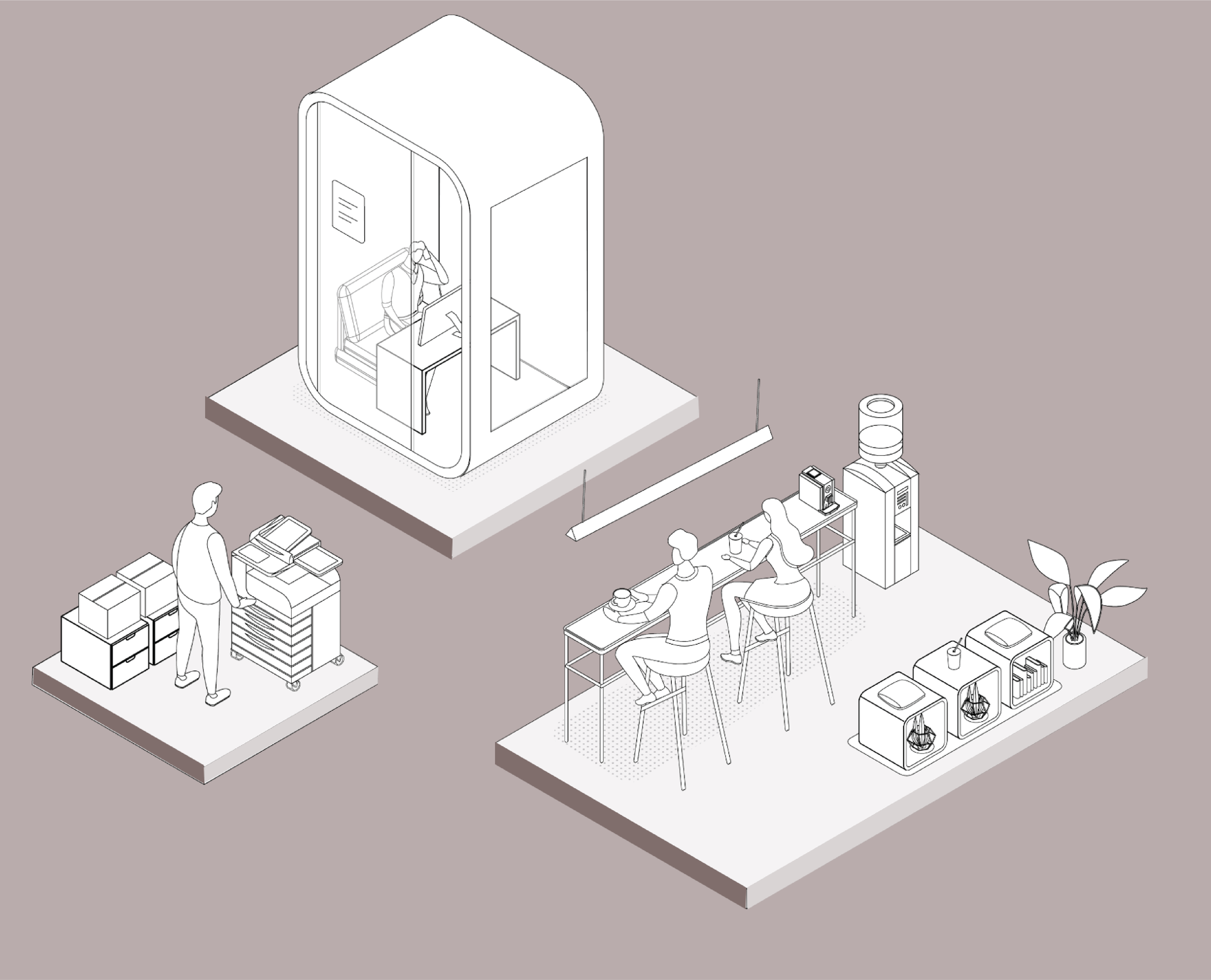5 WEEK PROJECT / FULL REMOTE
Client: Financial Services
Project: Service design and Space design
Rethink the spaces within a branch, and define a new model of relationship between Employees and workspaces (even remote ones), taking into account the needs of the space, the work tools and interactions between colleagues and with customers.
In the new post-Covid context, with the introduction of smart working and the consequent possibility of reorganizing part of the activities, the Bank has expressed its willingness to rethink the spaces inside the branch to allow for a different way of occupying and sharing them and to make the branch the fulcrum of the Manager-Customer relationship.
The objective of this collaboration was to define a new relationship model between Employees and workplaces, even remote ones, taking into account the needs of the space, the work tools and interactions between colleagues and with Customers.
DELIVERABLES
— A set of spatial modules
— Two scenarios of to-be journey
— Spatial design Guidelines
MY ROLE
My contribution went across all the phases of this project:
— I was involved in the research phase: conducted interviews in branch, facilitated the focus group with the client, worked on the trends refraiming and the generation of insights from the client survey
— Had an active role in the organization and facilitation of the 3 workshops done remotely
— Worked on the creation of the spatial modules and the detailed sheets for each area, linking them to the needs and activities of employees with customers
— Mapped the to-be journey - and created two respective scenarios
— Creating the set of guidelines on how to choose modules for each type of brand
— A document was put together in order to present all the spatial solutions and the new space experience of this branch
Research & Discovery
1. REMOTE FOCUS GROUP
As part of the initial familiarisation phase, we moderated a Focus Group session with the aim of understanding the needs and expectations of the employees, but also identifying the activities carried out (in the branch or remotely) for each professional figure in focus.
2. BRANCH VISITS
We were able to visit 4 branches in Milan. With an ethnographic survey and short interviews in the field, we detected the current use of the spaces and investigated the areas for improvement.
3. CLIENT SURVEY (ACN)
Through the client survey we were able to identify the aspects of the branch experience considered most important by the Bank's customers and the adequacy of these aspects with respect to their expectations.
Starting from the results of the survey, it was possible to identify a set of needs on the Client side which guided the subsequent phases of co-creation of the spaces.
4. TRENDS REFRAMING (ACN)
Starting from the analysis of the retail and banking world, we created a cross-industry reframing trend, in order to be aware of what is being done and where we want to project this new experience.
Co-creation and participatory design
Co-creation workshop 1 - done remotely
Validating and Elaborating the activity map and needs
The first workshop had the aim to validate the mapping of the current experience (done during the focus group) and helped us identify the main areas of opportunity.
Co-creation workshop 2 - done remotely
A second workshop was then organized in order to generate, together with stakeholders and employees a first set of research-based solutions.
Co-creation workshop 3 - done remotely
A third workshop was then important to organize, in parrallel with the design phase, to iterate and finalize the concept modules together with the participants, supported by observations from the branch visits.
Ideation and Design
Generation of design drivers
The evidence gathered in the Research phase (interviews, branch visits, client survey) made it possible to define the Design Drivers, the guiding pillars for the design of the branch spaces and modules. These reflect both the business needs expressed by the Bank and the needs of end users and customers.
Design of modules
Starting from the evidence of the Research and through the co-creation sessions, we have designed a set of spatial solutions that we call modules, and that are dedicated to specific activities of the employees and customers, without giving specific architectural indications.
These modules can be basic modules or trasversal modules and are part of 4 main areas. They can be combined with each other in different compositions and proportions (based on the reference branch, its needs and characteristics).
In order to respond to the needs of adaptability and scalability of spaces, some of the basic modules are able to evolve, providing alternative spatial solutions to carry out different activities.
Detail sheets for each module
Some dedicated detail sheets have been created for each functional module, with the aim of highlighting the design drivers who guided the design and to summarise all the key characteristics defined in the co-creation phase.
To be journey
We have created two possible scenarios, representative of the interaction of an Employee and a Customer with the functional modules in their basic or evolved (when multifunctional) mode within the branch. These modular solutions enable Employees and Customers to live a branch experience that responds to their respective needs when carrying out all possible activities within the branch.
The to-be journeys were built to highlight three main aspects:
the multifunctional use of the designed spaces
the responsiveness of the spaces to the needs of customers and staff in carrying out activities
the new possible interactions between Employees, Customers and available spaces
Example of scenario
Guidelines
In order to configure the branches, we have defined a set of rules to follow, starting from the essential modules that will make up the configuration of the base branch.
We first created some characteristics different for types of branches. Depending on these characteristics, other modules can be added in order to meet the requirements of each individual branch.
Team
• 1 senior service and interaction designer
• 2 project managers
• 2 service and interaction designers
• 2 analysts





















